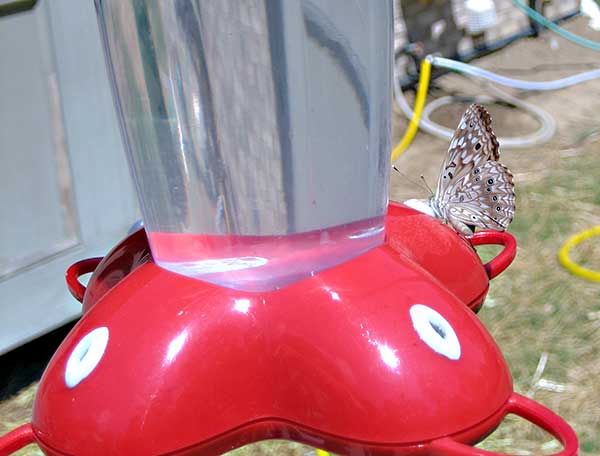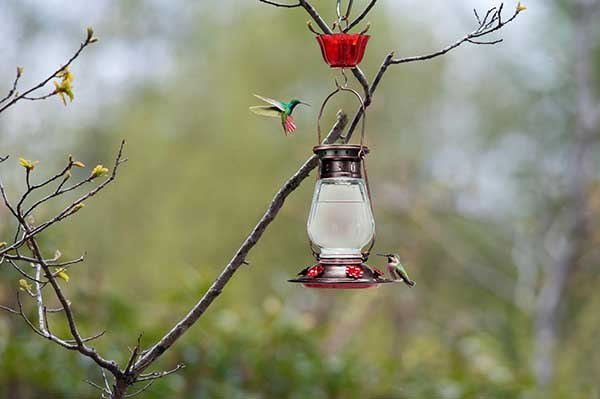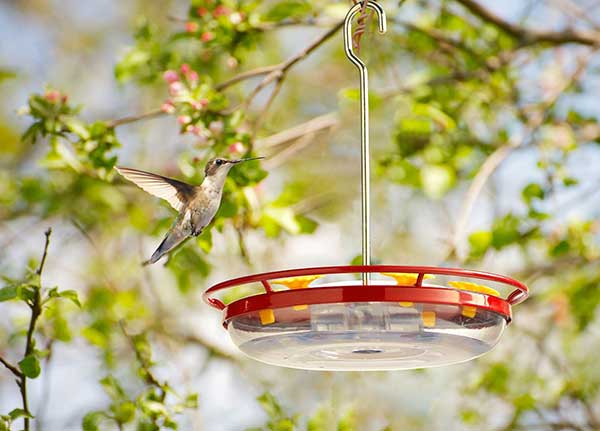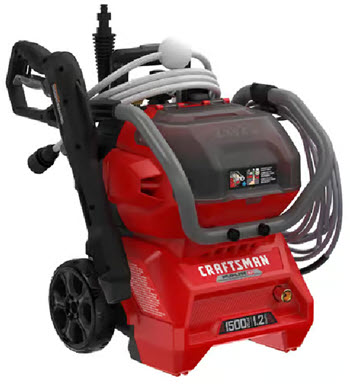If you love the soft buzz of bees, the quiet flutter of butterfly wings, and the flash of iridescent feathers zooming past your window, then a pollinator-friendly garden is your kind of paradise. As gardeners and nature lovers, we often think of native plants and flowers when we want to support pollinators—but there’s one more element you might be overlooking: hummingbird feeders.

Incorporating a hummingbird feeder into your garden can be the perfect complement to native blooms, giving these high-energy birds a reliable food source while enhancing your garden’s visual and ecological vibrance. Let’s explore how you can seamlessly blend feeders into your space, turning it into a haven for hummingbirds and other pollinators.

Why Add Hummingbird Feeders to Your Garden?
While native plants are vital for pollinators, hummingbird feeders provide an essential backup food source—especially during migration seasons or when flowers aren’t in full bloom. A well-placed feeder filled with sugar water can help sustain hummingbirds through dry spells, cold snaps, or transitions between blooming cycles.
Think of it this way: just as we appreciate a snack on the go, hummingbirds benefit from a quick sip as they flit between plants. Plus, feeders give you a front-row seat to their dazzling aerial acrobatics, something your average flower just can’t compete with!
Choose the Right Feeder (Design Matters!)
Not all feeders are created equal. The ideal hummingbird feeder should be easy to clean, made of durable materials, and designed with both bird safety and visibility in mind. One standout option is the Kingsyard hummingbird feeder, which combines sleek aesthetics with functionality. It’s built to attract hummingbirds while minimizing waste and warding off unwanted guests like ants or bees.

Look for features like built-in ant moats, bee guards, and bright red coloring to naturally draw hummingbirds in. The easier it is to refill and clean, the more likely you’ll keep using it—and the happier your feathered visitors will be.
Strategic Placement: Blending Feeders with Flowers
For the best results, position your feeder near existing pollinator plants. Hummingbirds tend to remember food sources, so placing the feeder in the same general area as tubular flowers like salvia, columbine, or bee balm will keep them coming back.
A little shade is also helpful to keep nectar fresh longer, and placing it near a window or outdoor sitting area gives you the joy of easy observation. Just remember to space your feeder out from high-traffic human zones so birds can feed in peace.
Maintain It Like You Would Your Garden
You wouldn’t let weeds overtake your flower beds or forget to water during a heatwave—your feeder deserves the same level of care. Especially during warm months, sugar water should be replaced every 2–3 days, and the feeder cleaned thoroughly to prevent harmful mold or bacteria from forming.
A routine check every few days ensures your hummingbird feeder remains a safe and reliable resource for your garden guests. And don’t worry—it’s easier than it sounds, especially with models like those from Kingsyard that make cleaning quick and simple.
A Win-Win for You and the Birds

By integrating a hummingbird feeder into your pollinator-friendly garden, you’re offering support to some of nature’s most incredible little creatures. Not only do you help hummingbirds thrive, but you also create a peaceful, vibrant, and educational backyard space that benefits bees, butterflies, and curious human observers alike.
With the right setup, your garden can become more than beautiful—it can become a sanctuary. So this season, consider adding a feeder or two. It may just be the most rewarding addition you’ll make.
Explore the full collection of Kingsyard bird feeders to find the perfect match for your garden and your hummingbird guests.






